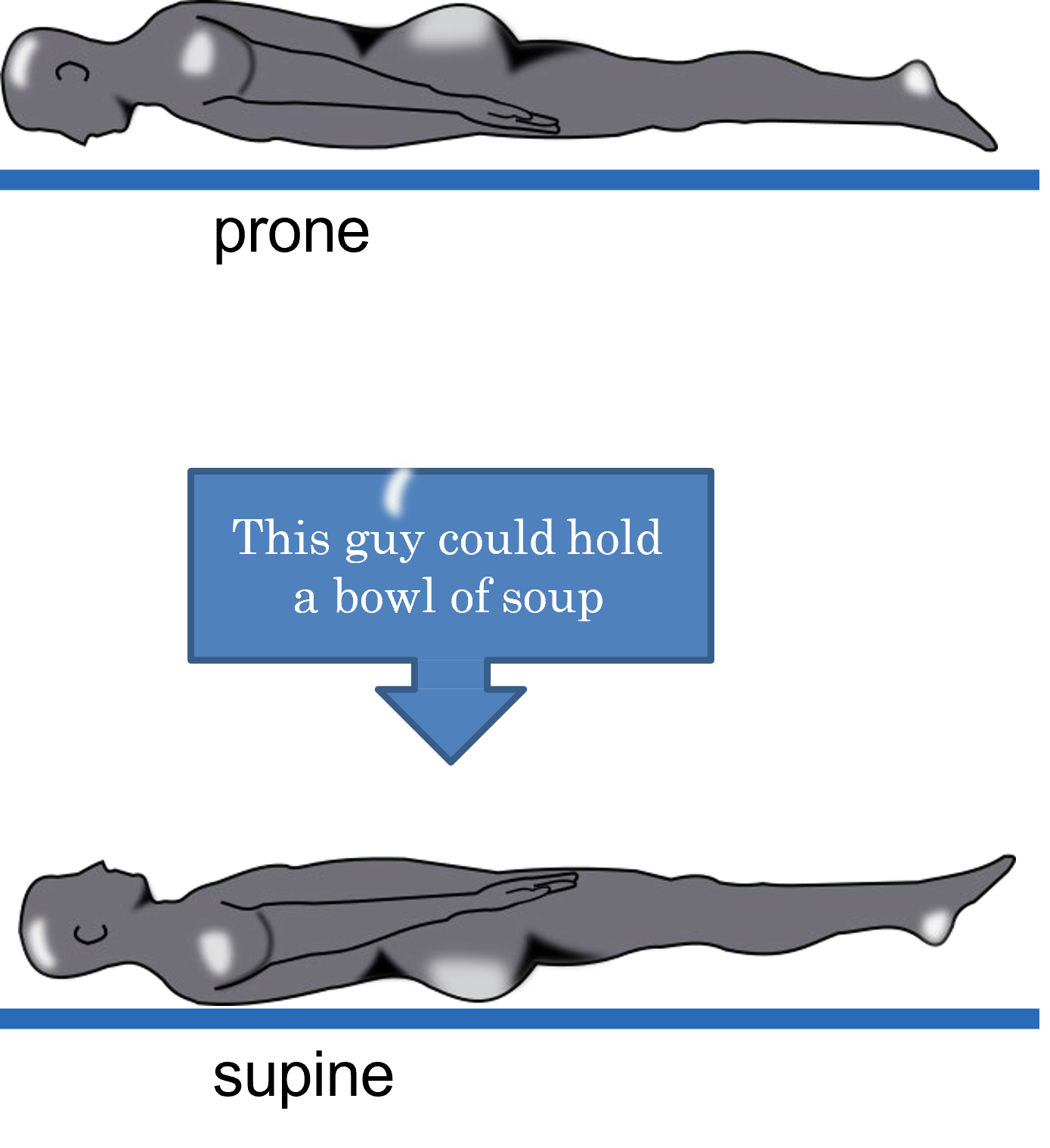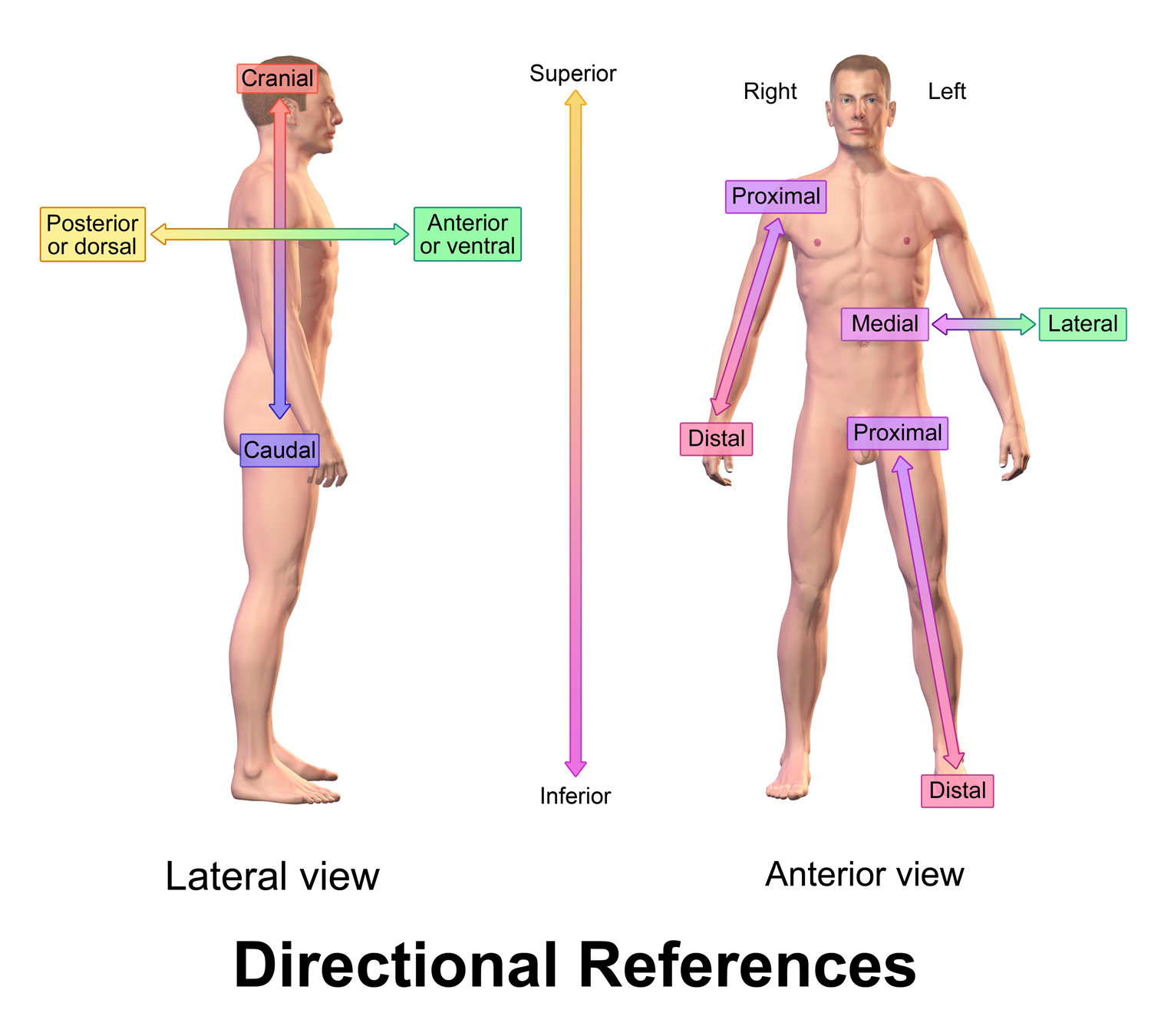1.3: Directional Terms
- Page ID
- 53508
Directional Terms
With the body in anatomical position, there are specific terms to describe parts of the body with respect to each other. Please note that these terms are always used in reference to a body in anatomical position, regardless of that human body's actual position.
| Directional Term | Meaning | Example |
|---|---|---|
|
supine |
lying face up |
A person lying face up is in the supine position. |
|
prone |
lying face down |
A person lying face down is in the prone position. |
|
superior / cranial |
above or higher up | The nose is superior (or cranial) to the chin. |
|
inferior |
below or lower down | The knees are inferior to the pelvis. |
|
caudal |
below or lower down - toward the tail bone from higher up | The pelvis is caudal to the stomach. |
|
medial |
toward the midline | The sternum is medial to the shoulders. |
|
lateral |
toward the side | The ears are lateral to the nose. |
|
superficial |
toward the body surface | The skin is superficial to the heart. |
|
deep |
toward the body core | The heart is deep to the ribs. |
|
anterior / ventral |
front or toward the front | The toes are anterior (or ventral) to the heel. |
|
posterior / dorsal |
back or toward the back | The spine is posterior (or dorsal) to the sternum. |
|
proximal |
for limbs only: closer to the shoulder (upper limb); closer to the hip (lower limb) | The elbow is proximal to the wrist. |
|
distal |
for limbs only: further from the shoulder (upper limb); further from the hip (lower limb) | The toes are distal to the knee. |


Two or more directional terms may be technically correct, however only certain directional terms will convey the most relevant information for a specific situation. For example, when discussing a brain tumor relative to the nose, it may be deep, dorsal and, lateral. When we ask, "Can we take a scalpel, shove it up the patient’s nasal cavity, and cut out the tumor?" it would not be appropriate to say, "No, it is too lateral," or "No, it is too dorsal." Instead, it would make the most sense to say, "No, it is too deep. We will have to cut through the skull to get to it."
Above: Cross section of the thigh.
Attributions
- "Anatomy and Physiology Lab Reference" by Laird C Sheldahl, OpenOregonEducational Resources, Mt. Hood Community College is licensed under CC BY-SA 4.0
- "BIOL 250 Human Anatomy Lab Manual SU 19" by Yancy Aquino, Skyline College is licensed under CC BY-NC-SA 4.0
-
Blausen 0019 AnatomicalDirectionalReferences.png by Blausen.com staff (2014). "Medical gallery of Blausen Medical 2014". WikiJournal of Medicine 1 (2). DOI:10.15347/wjm/2014.010. ISSN 2002-4436


